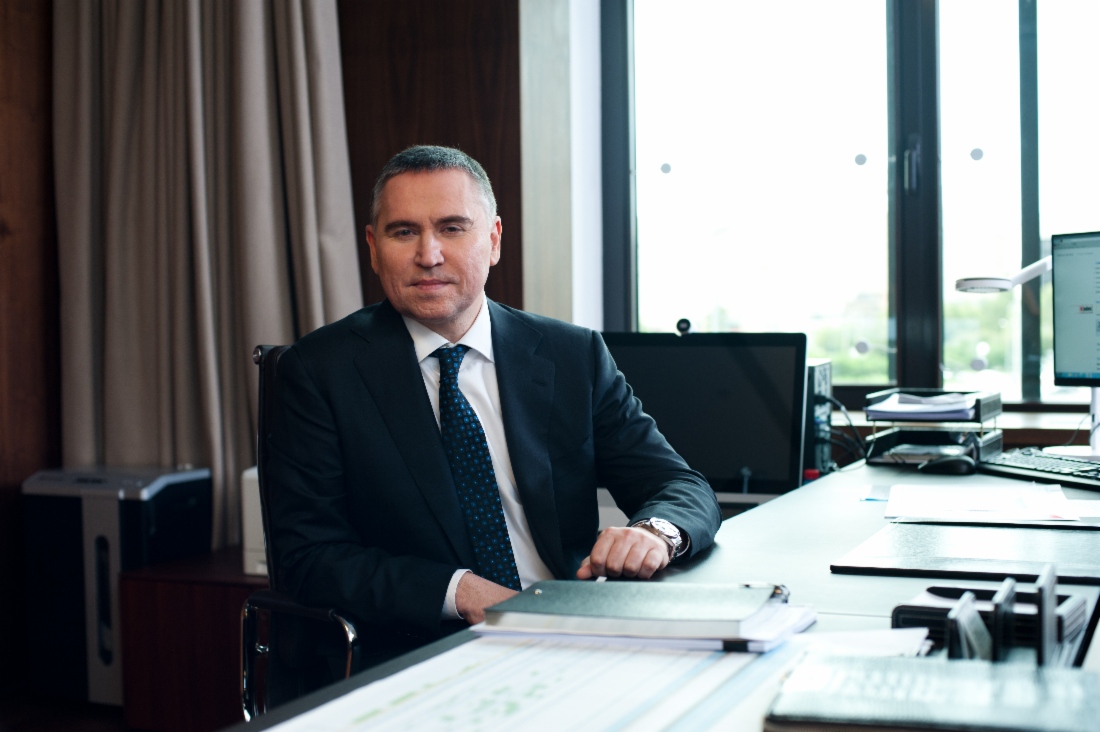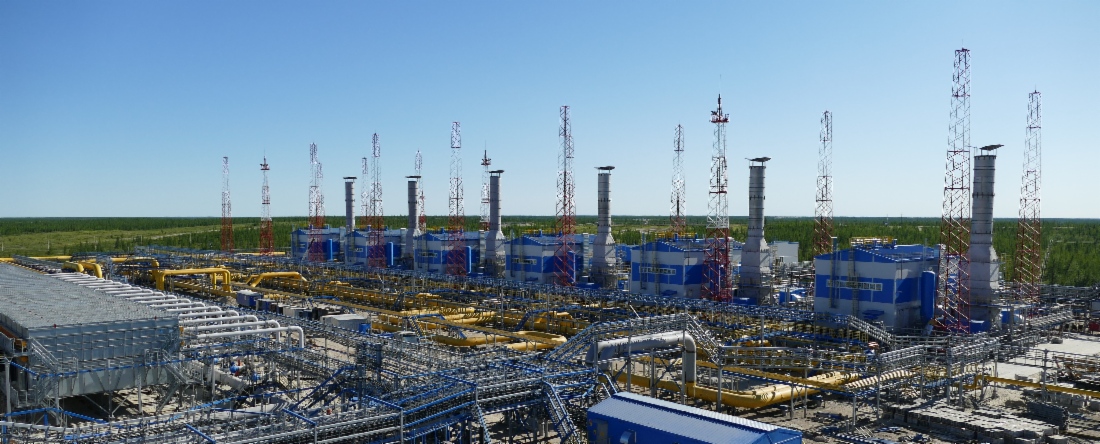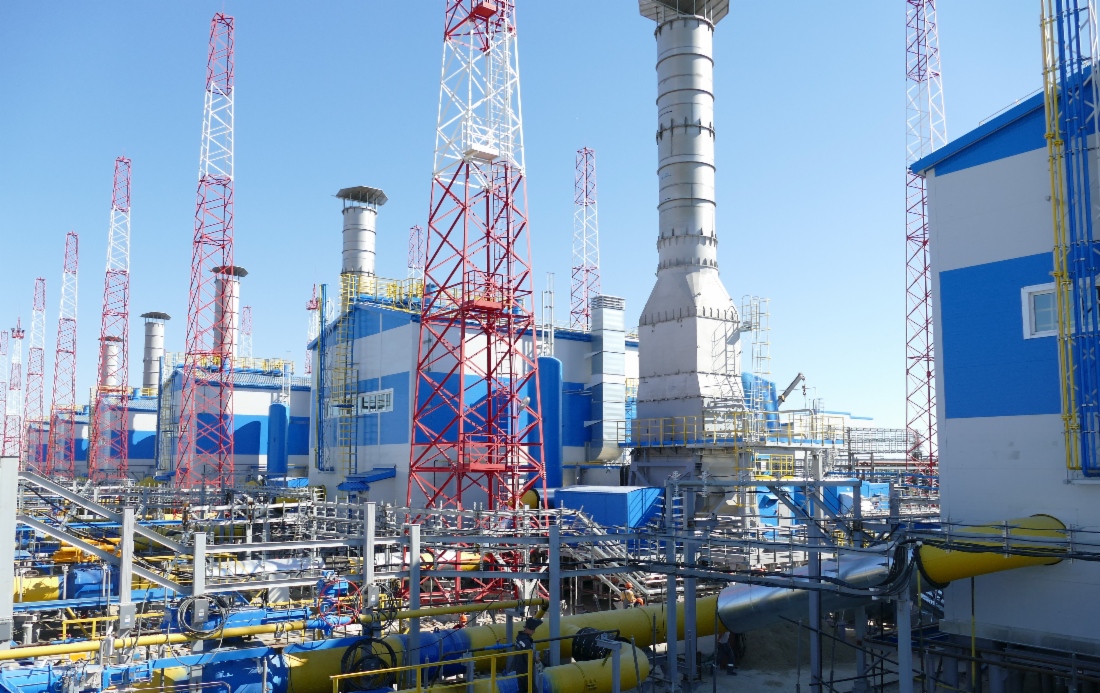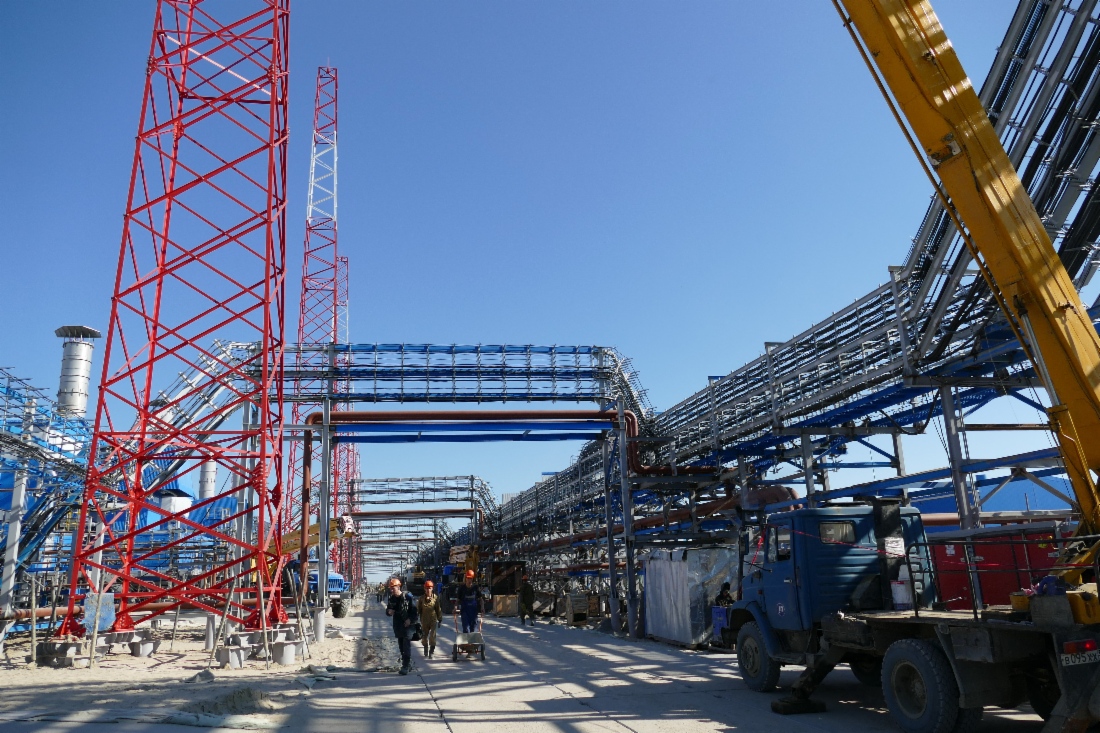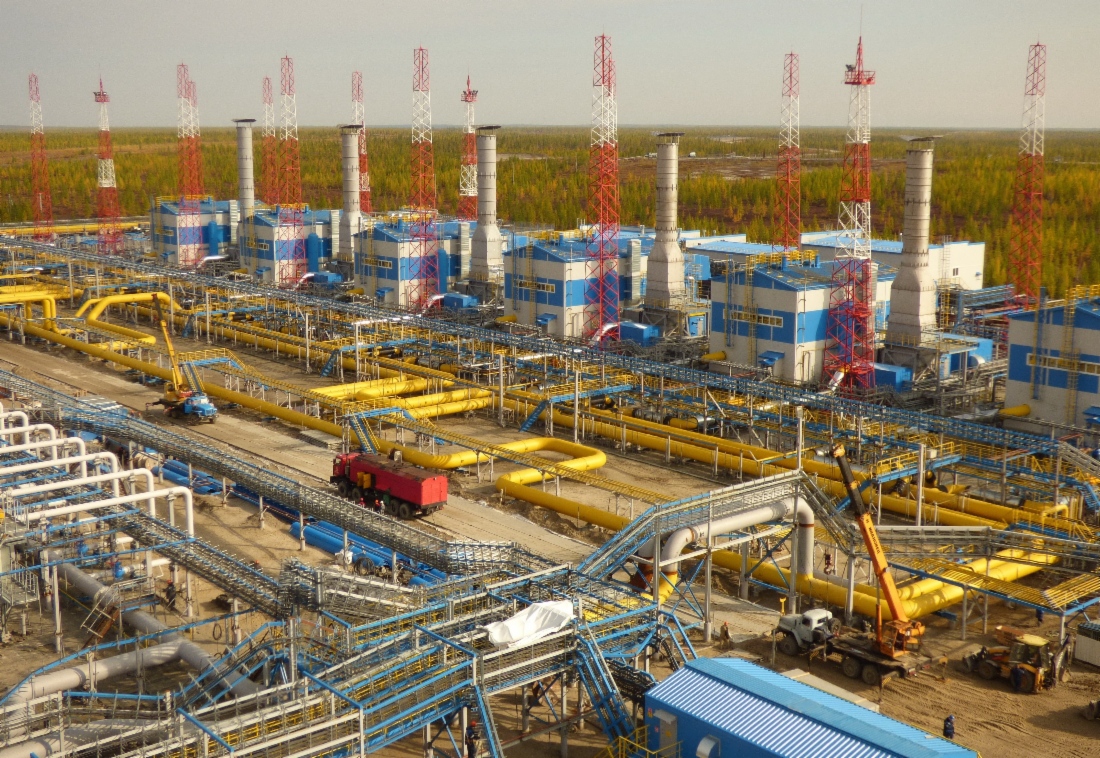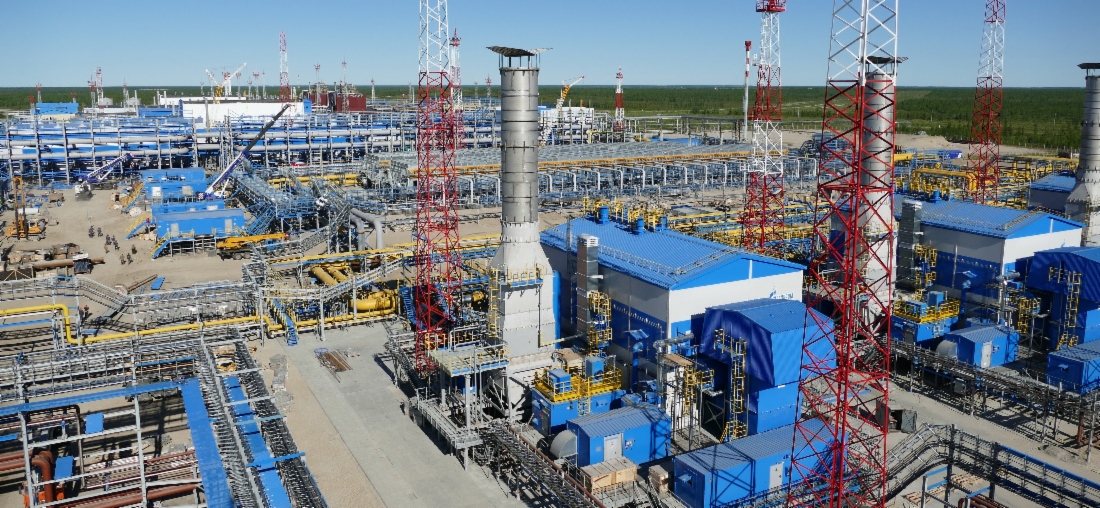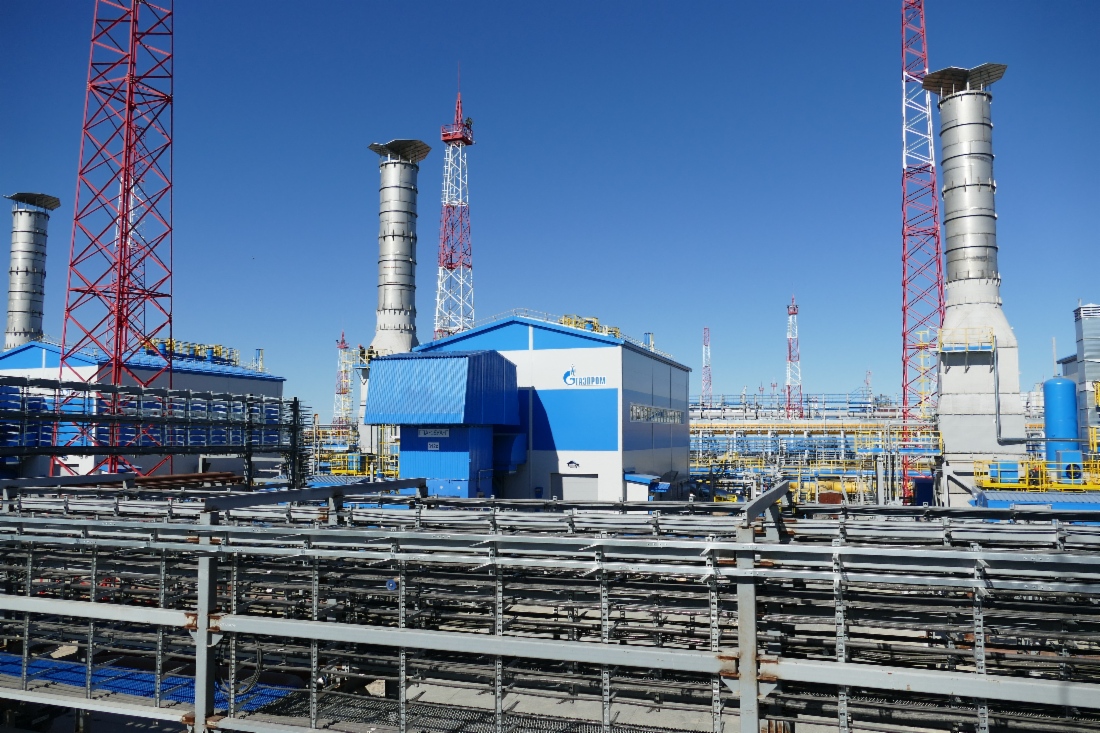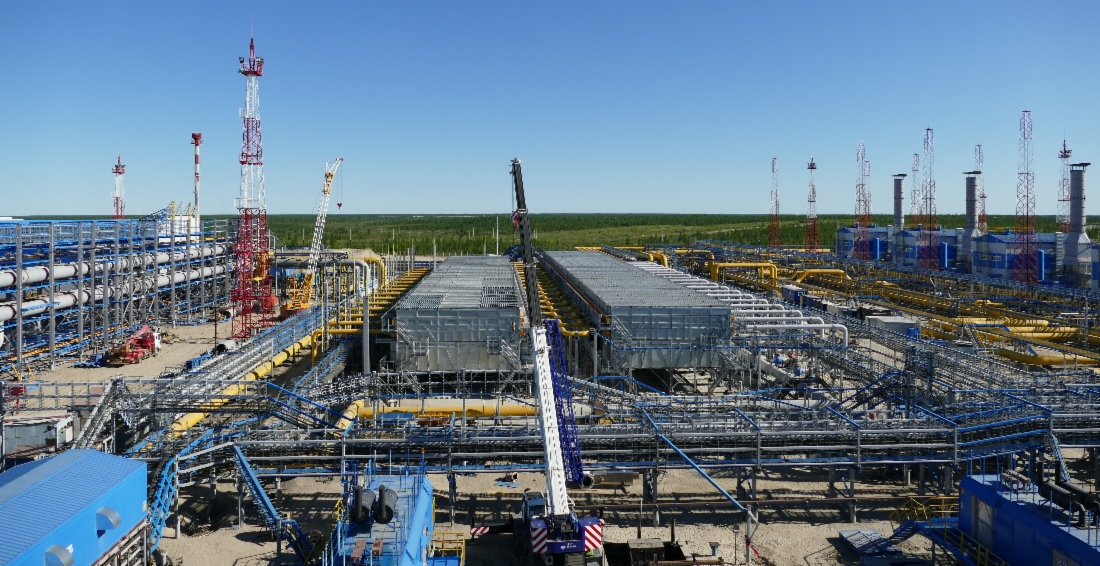New cost reduction method
October 26, 2017
Published in corporate Gazprom Magazine Issue 10, interview conducted by Sergey Pravosudov
Mikhail Sirotkin, Head of Department 121 of Gazprom, and his Deputy Nikolai Tkachenko answer questions from Gazprom Magazine.
- Mr. Sirotkin, how did your department, which is usually engaged in procurement and cost reduction, become directly involved in construction projects?
-
This is not unusual, because we are still dealing with cost reduction. Last February, Alexey Miller, Chairman of the Gazprom Management Committee, tasked our Department with constructing a booster compressor station (BCS) at the Zapolyarnoye oil, gas and condensate field and thereby try out the project management method. The BCS is among the Company’s top-priority projects and is meant to secure peak gas demand right after its launch in early 2018. This is done to improve the performance of Gazprom’s customers and to apply the lessons learned to the future construction projects of the Company. It is no secret that Gazprom has to take drastic cost reduction measures nowadays.
-
It is essential for the investor to know the actual (market) value of all components of a project’s capital expenditures, including preliminary work, logistics, all types of construction and installation, process equipment, startup & commissioning, etc. The BCS is a project with a wide range that includes the most common types of costs typical for every site facility of the Company.
It is crucial to properly estimate the actual consumption of the contractor’s resources from the very beginning, as well as to assess the sufficiency of funds for maintaining the managerial staff of the customer. By gaining positive (or, in certain processes, even negative) experience in implementing a project, the investor will be able to subsequently plan out similar activities in other projects with maximum precision and efficiency, as well as to choose the optimal approaches, minimizing downtime and adopting the most efficient managerial decisions.
Contemporary approaches
- Why did you opt for the project management method? After all, Gazprom’s usual function-based management model has been tried and tested for decades?
-
In a permanently changing environment, the Company is looking for new forms of management that would help us improve the efficiency of delivering investment projects. Most of the standard controls used at the corporate level today are normally geared by the production unit toward assessing the project’s effectiveness either upon completion of its separate stages or upon its full completion. This approach considerably restricts the opportunities to influence a project’s key indicators directly and at opportune times.
We used to estimate the project cost and try to reduce it. Then, we realized that the issue lies in the process of designing, executing and managing projects, and much depends on prompt coordination between several subdivisions and the contractor. Our main goal, I must admit, was the reduction of costs.
It is proven in practice that corrective measures are more efficient when problems only begin to arise at each stage of a project. It is possible today to control budget- and time-related changes and, which is especially valuable, to influence the so-called human factor, which often has a major impact on project effectiveness in general.
“Project office”
- Mr. Tkachenko, could you elaborate on the preparations for the launch of the pilot project?
-
Initially, we worked out the daily execution plan for the project up until the end of construction operations (for a year and a half). Before setting to work, we studied all activities constituting construction, installation and specialized works for the project, as well as the available materials and equipment. We selected the best equipment makers ready to closely follow all the technical requirements of the design documentation and STOs of Gazprom. All the decisions were also agreed on with the maintenance service.
The equipment prices were only considered, as they say, “straight from the source.” As a result, the estimated cost of construction and equipment (except for the gas compressors) was reduced by RUB 3.5 billion against the initial cost (which is a decrease of 18 per cent, even after the feasibility study). Under ordinary circumstances, site facility projects have a regrettable tendency toward increasing the initial cost by 15–20 per cent.
-
In May 2016, Gazprom set up a “project office” to implement the project management method. Experts were recruited under a fixed-term employment contract for a specific project. The project office team, which consists of just 16 persons, performs all duties of the customer and developer (planning, overall management of construction & installation, and cost control).
To construct the BCS, Gazprom closed an EPC contract for a full work package. StroyTransNefteGaz and Gazprom Dobycha Yamburg became the general contractor and operator, respectively.
Now, a couple of words about the facility. The powerful technology infrastructure of the BCS covers over 145,000 square meters (14.5 hectares) of the Zapolyarnoye oil, gas and condensate field, meeting all the required parameters of gas transmission from CGTU-3C into the gas trunkline (to the main compressor station) taking into account the best process flow design and all the applicable standards and environmental requirements. Natural gas is compressed, purified and cooled down, i.e. it undergoes full treatment prior to being pumped into a gas pipeline.
-
The general designer, VNIPIgazdobycha, worked out all the engineering solutions for the sustainable and safe operation of the BCS, building on the years of construction experience in the harsh environment of the Extreme North. The BCS process systems and installations include a compressor shop with six gas compressor units 16 MW each (and two backup gas compressor foundations for the second phase), a cooling plant for 33 air handling units, a gas treatment unit, a gas purification workshop, a production and operation unit, a switch valve station, a repair and maintenance unit, a warehouse for packed oil, and other auxiliary facilities on the site.
At that time, a very difficult task was set before the project office team and the general contractor: in a short period of just 18 months (instead of the standard 30 months), to build a full set of engineering structures for the peak demand facility, from driving its first pile to launching the facility and supplying gas within the prescribed terms, i.e. by the fourth quarter of 2017.
- How does the project office operate today?
-
In line with project management methods, the tools of integrated factorial plan analysis are used to control project implementation. In addition, the availability of reliable information and daily monitoring are the key elements in all stages of project management.
As part of the project office, the customer and the contractor arrange on an ongoing basis all the necessary measures for the prompt elimination of emerging risks and problems without any additional correspondence. We jointly work out decisions to improve the quality of planning in projects and to increase the service speed (performance of the teams involved). Daily acquisition of up-to-date information leads to the full “immersion” of top managers in the project.
As a result, we switched to the program management strategy. While implementing the pilot project, the Department established relations with VNIPIgazdobycha in connection with the first stage of creating a building information model – a 3D model of the facility undergoing construction linked to a detailed work schedule. We had managed to identify and reconcile a number of inconsistencies, which helped eliminate additional costs in construction and installation, reducing the managerial costs of the customer by 42 per cent.
Each day, our employees obtain real-time information on the progress of numerous procurement and construction processes. Experts carry out strategic management of the project, preventing delays regarding start or end dates. The entire scope of work and its milestones, from the start to the end date, are planned out on a day-to-day basis and monitored under a detailed project execution plan, and construction proceeds as quickly as possible without disrupting the operational methods. The project model integrates all of Gazprom’s best practices.
Synergistic effect
- What are the other advantages of the project model?
-
The downtime is reduced from the usual 20–25 per cent to 5 per cent on average, which cuts the bulk of the contractor’s costs. The start dates are not going to be revised, as we are well on track.
In addition, both Gazprom and the general contractor are satisfied with the fixed cost and the rate of return. With an almost 20 per cent cost reduction, we are using the best equipment and materials for the construction. I would like to emphasize that, compared with similar construction projects, we have managed to ensure the highest quality of welding in this project in line with the construction supervision requirements.
It is essential to note that the project, thanks to careful planning and the participation of all members of the project team (including the maintenance staff) in the construction process, will not come to a halt during the commissioning (as is usually the case) and will not lose its effectiveness when up and running.
- Mr. Sirotkin, is everything going as well as Mr. Tkachenko is saying? Do you really have no problems whatsoever?
-
Of course, we have some difficulties, but that is normal. After all, the function-based model differs from project management considerably. And this is a new experience for Gazprom, a transition from the responsibility restricted to approved functions to the responsibility for a package of ever-changing tasks. The experience we have obtained is valuable and, I hope, will be used by the Company in other projects.
- Can you say now that this experiment has been a success?
-
The project method is an effective and proven management tool used globally and in Russia during investment projects with established timeframes and an approved budget. By now, we have completed 98 per cent of the construction, the hydraulic testing of the installed systems has been completed, and the no-load start-up is almost over. At the current state of construction readiness, we will be able to start pumping gas within the scheduled terms so as to complete the final stages and test the engineering systems and compressor units under load. The project will be finished in December 2017.
In this way, Gazprom uses new approaches amid tight budget constraints to streamline the cost control and performance improvement process with a view to lowering the unit cost of gas and reducing construction time without compromising product quality.


